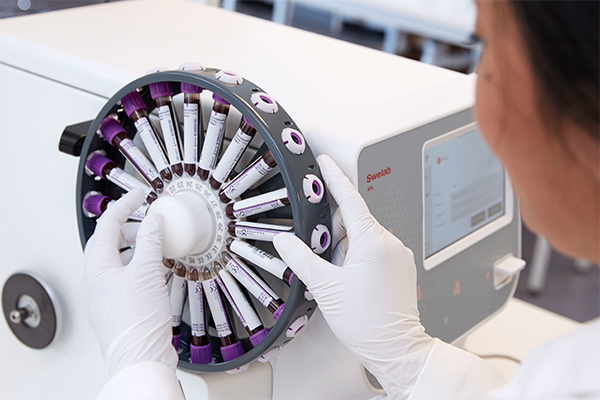Pre-analytical errors constitute a large part of the total number of errors that may affect the cell count test results (1). Too vigorous mixing of the collected blood can cause cell injury or hemolysis (2). Delayed or omitted mixing of the sample prior to analysis can cause blood clotting, which has been reported to constitute a significant part of all preanalytical errors (1,3). Automated mixing of the sample tube is therefore recommended to enable immediate mixing of the specimens after collection.
Gentle mixing prevents clotting
For a complete blood count (CBC), the blood is collected in an EDTA tube and gently mixed prior to analysis to prevent clotting. When working under stress, it can be easy for healthcare workers to forget the mixing step (3). Boule hematology analyzers Swelab Alfa Plus and Medonic M32 are therefore available with an autosampler function with a built-in mixer. The mixer design allows continuous mixing of the queued samples.
Constant mixing of the sample can also be important for samples with high erythrocyte sedimentation rate. As Boule hematology analyzers, to large part, are being used in fever investigations, a high sedimentation rate can be expected in many samples tested with these systems.

Boule hematology analyzers are purpose-designed for use in decentralized testing facilities. The autosampler wheel have a space-saving design to allow analyzers to be installed in laboratories where the bench-space is limited. The sampler wheel can be pre-set for rotating between 1–10 minutes before aspiration, taking care of the preanalytical mixing of the blood sample prior to analysis.




